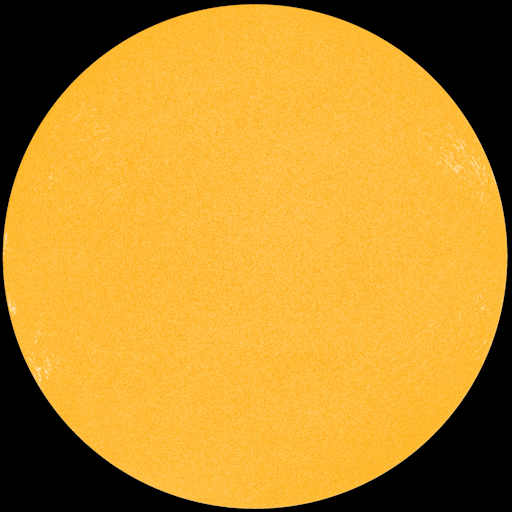Old Sol has been quiet lately. Far too quiet for the 10 and 11 meter band guys. As I’m typing this, the solar flux is back into double digits, at 95. The Sun Spot Number (SSN) is officially 24, but you need to squint real hard to actually see any sunspots: 
Sunspot SunSpeck group 1452 has pretty much rotated out of view, taking the meager solar activity we’ve had with it.
The NOAA/NASA/Space Weather prediction boys promise that we’re still a year away from the peak of cycle 24, and activity will increase.

Go up. Yes, it will go up any time now, just you wait. Hey! Look over there! Global Warming!
Meanwhile, back in the real universe, the background x-ray flux is at B1 levels.
So what does all this mean for us DXers? The lower solar activity has several major effects. First, the highest frequencies that can be propagated are lower, in many cases much lower. During a solar cycle maximum with high activity, the higher bands are often open 24 hours a day. With the lower activity we’ve been having, this is not this case. Yes, 10 meters is still open at times, but not nearly as much, or with the good conditions that have been experienced in the past. So operators and listeners need to move down to lower frequencies.
The foF2 frequencies are correspondingly lower, which means that a given band (including 43 meters) will go long earlier in the evening. Operators may want to adjust their schedules accordingly, and consider transmitting a little earlier to reach a semi-local audience. OTOH, they’ll end up reaching more distant listeners earlier in the evening as well.
Second, D-layer absorption is lower, due to decreased x-ray flux from the Sun. This means that lower frequencies are not attenuated as much, which is a good thing, since in many cases that’s all that is propagating. The last few days, I’ve been hearing 48 mb (6 MHz) Europirates fade in as early as 2 hours before local sunset. And once the Sun does set, their signal levels increase to really strong levels. Likewise, US pirates such as Wolverine Radio have been reported across the US and into Europe with incredible signal levels.
Third, the lack of major solar flares and coronal streams affecting the Earth means that geomagnetic conditions have been very stable. No geomagnetic storms means stronger signals, and less fading.
The net result is that reception conditions for 43 meter band pirates has been extremely good lately. Lots of operators and listeners have been taking advantage of the excellent conditions, loggings are way up.
There is a coronal stream expected to start impacting the Earth around the 13th or 14th of April, so we’ll have to see what effect, if any, that has on conditions. Until then, enjoy the great propagation!
